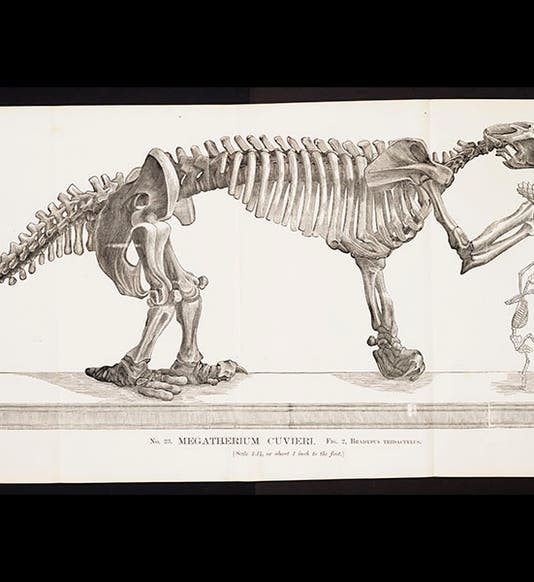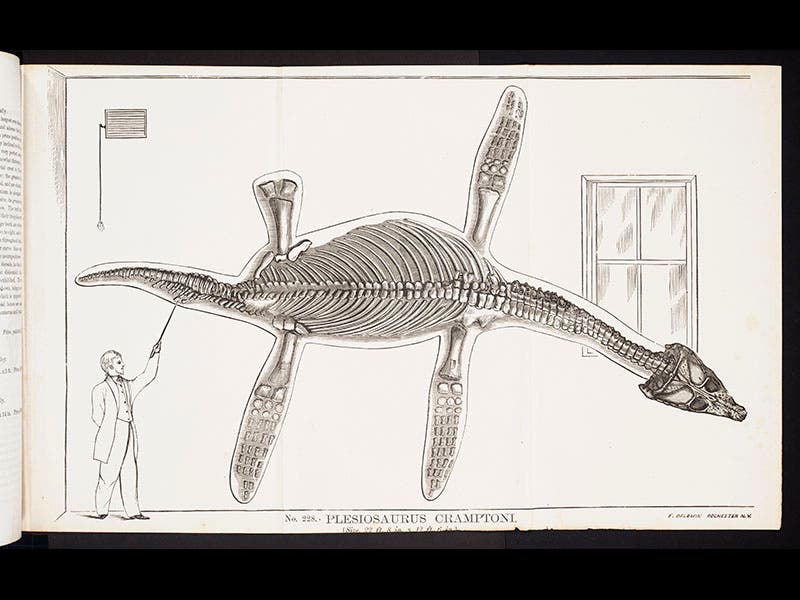Scientist of the Day - Henry Augustus Ward
Henry Augustus Ward, an American naturalist, collector, and purveyor of curiosities, was born Mar. 9, 1834. Ward travelled through Europe as a 20-year old and started collecting fossils and minerals. He never stopped. When he eventually returned to his home of Rochester, New York, he had some 40,000 specimens, and in 1862 he discovered there was a museum market for plaster casts, and he began Ward's Natural Science Establishment. We have in the History of Science Collection the first catalogue issued by the firm, in 1866. If you had the money, and the space to put it, you could buy a 17-foot-long giant ground sloth (Megatherium cuveri) for just $250, put together from 124 casts of 175 bones (see first image above). Or you could purchase a Plesiosaurus wall mount, cast in 8 pieces, for $150 (second image), a cast of a Dinotherium skull from Germany (third image), or small replicas of the concrete dinosaurs erected on the Crystal Palace grounds outside London in 1854, $30 for a set of five (fourth image).
Ward soon began offering mounted specimens of birds and mammals as well as fossil replicas, and as museum taxidermy was a relatively new science, he trained his own specialists, many of whom, like Carl Akeley and Frederick Lucas, went on to productive careers in the nation's finest natural history museums. Ward's establishment acquired some renown when they stuffed and mounted Jumbo the elephant, after he was struck by a train in 1885. Ward himself died on July 4, 1906, when he was struck by a car on the streets of Buffalo. Thankfully, Henry was not stuffed and mounted, but buried properly in a Rochester cemetery. However, his tombstone is more than a little odd, even for a collector of minerals (fifth image).
Dr. William B. Ashworth, Jr., Consultant for the History of Science, Linda Hall Library and Associate Professor, Department of History, University of Missouri-Kansas City











